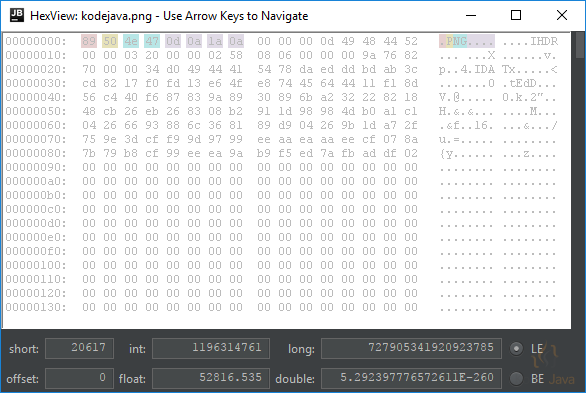package org.kodejava.io;
import java.io.File;
import java.io.FileInputStream;
import java.io.IOException;
import java.io.InputStream;
public class ReadFileIntoByteArray {
public static void main(String[] args) throws IOException {
File file = new File("README.md");
try (InputStream is = new FileInputStream(file)) {
if (file.length() > Integer.MAX_VALUE) {
throw new IOException("File is too large.");
}
int offset = 0;
int bytesRead;
byte[] bytes = new byte[(int) file.length()];
while (offset < bytes.length
&& (bytesRead = is.read(bytes, offset, bytes.length - offset)) >= 0) {
offset += bytesRead;
}
}
}
}
Tag Archives: InputStream
How do I get the content of an InputStream as a String?
We can use the code below to convert the content of an InputStream into a String. At first, we use FileInputStream create to a stream to a file that going to be read. IOUtils.toString(InputStream input, String encoding) method gets the content of the InputStream and returns a string representation of it.
package org.kodejava.commons.io;
import org.apache.commons.io.IOUtils;
import java.io.InputStream;
import java.io.FileInputStream;
import java.nio.charset.StandardCharsets;
public class InputStreamToString {
public static void main(String[] args) throws Exception {
// Create an input stream for reading data.txt file content.
try (InputStream is = new FileInputStream("data.txt")) {
// Get the content of an input stream as a string using UTF-8
// as the character encoding.
String contents = IOUtils.toString(is, StandardCharsets.UTF_8);
System.out.println(contents);
}
}
}
Maven Dependencies
<dependency>
<groupId>commons-io</groupId>
<artifactId>commons-io</artifactId>
<version>2.14.0</version>
</dependency>
How do I convert InputStream to String?
This example will show you how to convert an InputStream into String. In the code snippet below we read a data.txt file, could be from common directory or from inside a jar file.
package org.kodejava.io;
import java.io.*;
import java.nio.charset.StandardCharsets;
public class StreamToString {
public static void main(String[] args) throws Exception {
StreamToString demo = new StreamToString();
// Get input stream of our data file. This file can be in
// the root of your application folder or inside a jar file
// if the program is packed as a jar.
InputStream is = demo.getClass().getResourceAsStream("/student.csv");
// Call the method to convert the stream to string
System.out.println(demo.convertStreamToString(is));
}
private String convertStreamToString(InputStream stream) throws IOException {
// To convert the InputStream to String we use the
// Reader.read(char[] buffer) method. We iterate until the
// Reader return -1 which means there's no more data to
// read. We use the StringWriter class to produce the string.
if (stream != null) {
Writer writer = new StringWriter();
char[] buffer = new char[1024];
try (stream) {
Reader reader = new BufferedReader(new InputStreamReader(stream,
StandardCharsets.UTF_8));
int length;
while ((length = reader.read(buffer)) != -1) {
writer.write(buffer, 0, length);
}
}
return writer.toString();
}
return "";
}
}
How do I convert string into InputStream?
Here you will find how to convert string into java.io.InputStream object using java.io.ByteArrayInputStream class.
package org.kodejava.io;
import java.io.*;
import java.nio.charset.StandardCharsets;
public class StringToStream {
public static void main(String[] args) {
String text = "Converting String to InputStream Example";
// Convert String to InputStream using ByteArrayInputStream
// class. This class constructor takes the string byte array
// which can be done by calling the getBytes() method.
InputStream stream = new ByteArrayInputStream(text.getBytes(StandardCharsets.UTF_8));
}
}
How do I read image file?
Here you see a code sample to read an image file. This code will work either the image file is located in a file folder or inside a jar file. You can use javax.imageio.ImageIO class to read the image file.
package org.kodejava.awt;
import javax.imageio.ImageIO;
import java.awt.image.BufferedImage;
import java.io.IOException;
import java.io.InputStream;
public class ReadingImage {
public static void main(String[] args) {
ReadingImage demo = new ReadingImage();
demo.getImage();
}
public void getImage() {
try {
InputStream is = getClass().getResourceAsStream("/kodejava.png");
BufferedImage image = ImageIO.read(is);
// Do something with the image.
} catch (IOException e) {
e.printStackTrace();
}
}
}


